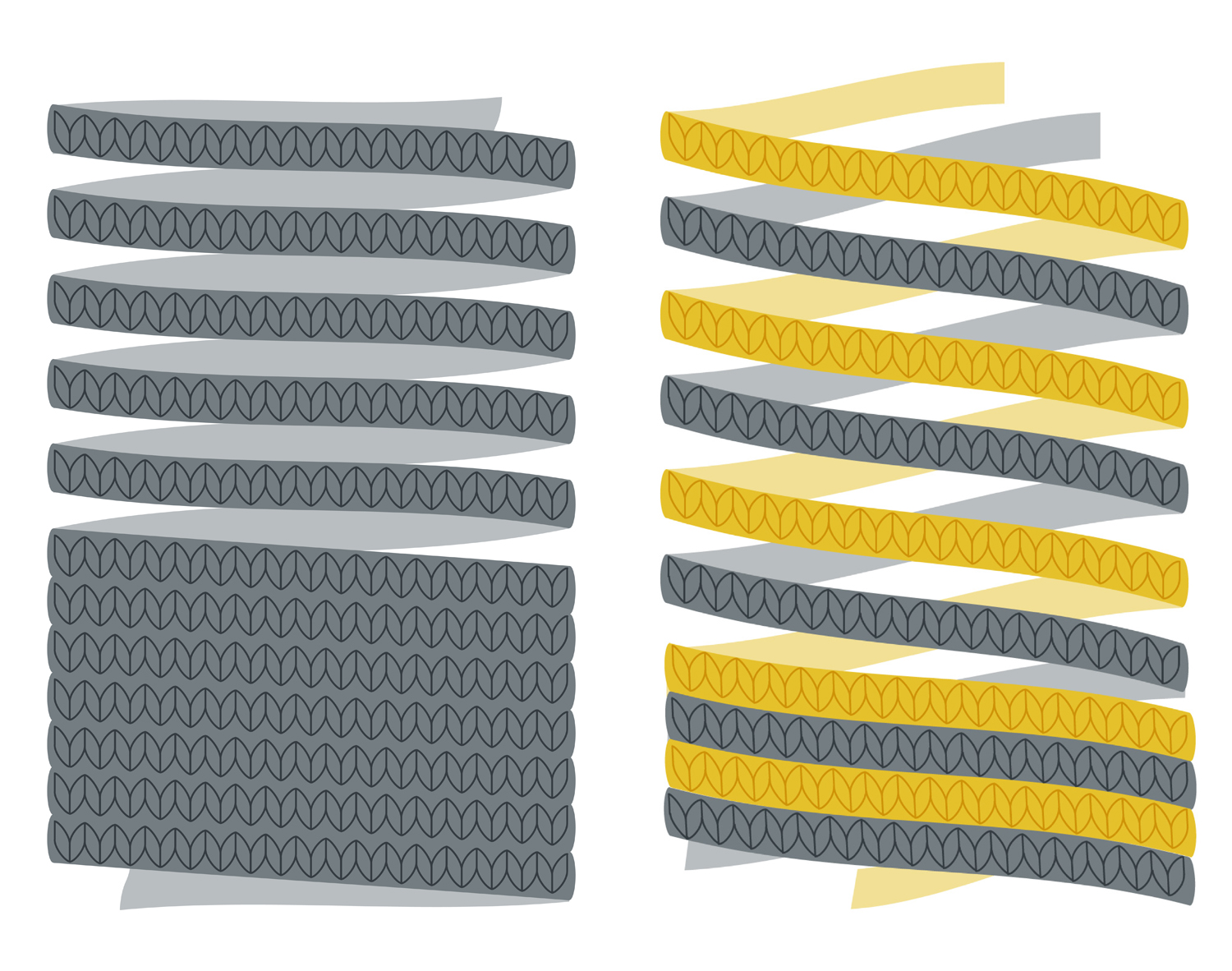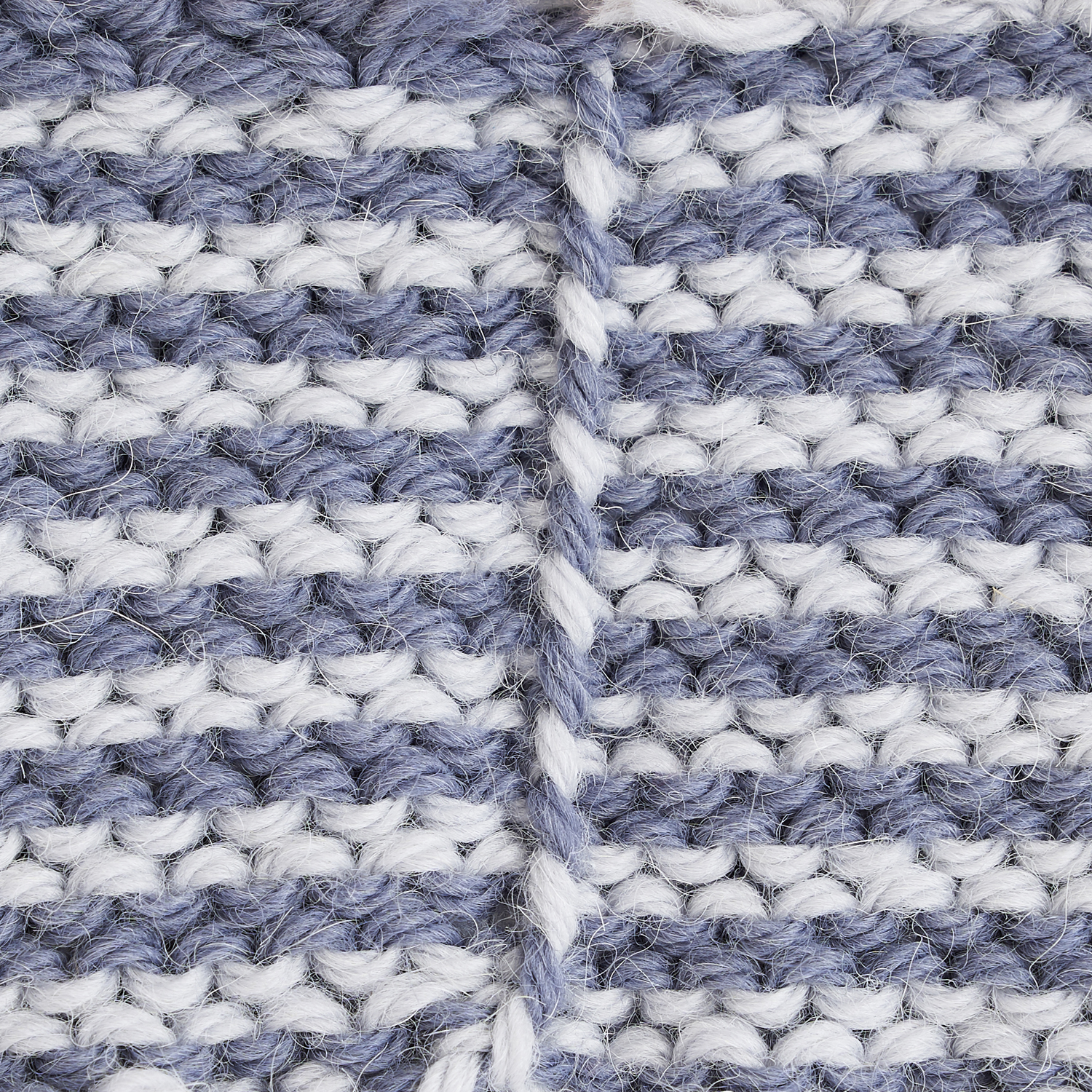When you knit in the round, you aren’t working discrete, complete rounds, in the same way as you would work a row in flat knitting. Your knitting isn’t a series of rings of stitches sat on top of each other. Instead, in each round you are working a complete circuit or 360° turn of a helix. This is important because it means that the first stitch in your round is not adjacent to the last stitch in your round. In normal knitting you work a single, complete spiral of stitches, where the last stitch of the previous round is adjacent to the first stitch of the next round. Helical knitting turns this on its head, and sets up multiple spirals all sitting on top of each other. This can be somewhat hard to visualise! Luckily, my good friend Mimi Codd has stepped in to help, and created these super illustrations (above) to demonstrate what’s going on. On the left is a standard spiral of grey stitches in “normal” knitting in the round, and on the right we are working helically with 2 helices of stitches, one in grey and the other in yellow.
So why would you bother to set up multiple spirals of stitches, rather than just stick with one spiral? There are a number of stitch patterns where the first/last stitches not being adjacent leads to a noticeable jog at the change of the round. The most obvious of these stitch patterns is stripes. The jog occurs where a stitch in the first colour sits next to a stitch in the second colour at the change of the round (see right side image above). There are a number of techniques available to minimise the appearance of this jog, but they are most effective on multi-round stripe patterns, and none of them completely hides the jog for 1x1 stripes. The helical knitting technique completely removes the jog, as well as removing the ridge where yarns are carried at the rear of the work (see wrong side image above).
But helical knitting is about SO much more than just creating jogless 1x1 stripes. That’s just the start of it! In chapter 2 Something New to Learn About Helical Knitting will introduce a whole series of other stitch patterns that can be worked with a double helix of stitches. In the third installment, I will show you how to follow other instructions when you work helically – things like shaping on a mitten or sock, and more. And finally, I’ll open up the world of multiple helices, taking helical knitting to wider and wider applications. But that’s a whole other series of blog posts, and we’ll get there in due course.
Something New to Learn About Helical Knitting is now on sale, and can be purchased for £13.99 from our online shop, or directly on Ravelry. Do subscribe to our newsletter, if you want to be sure to know about our latest releases, by clicking the subscribe button below.




